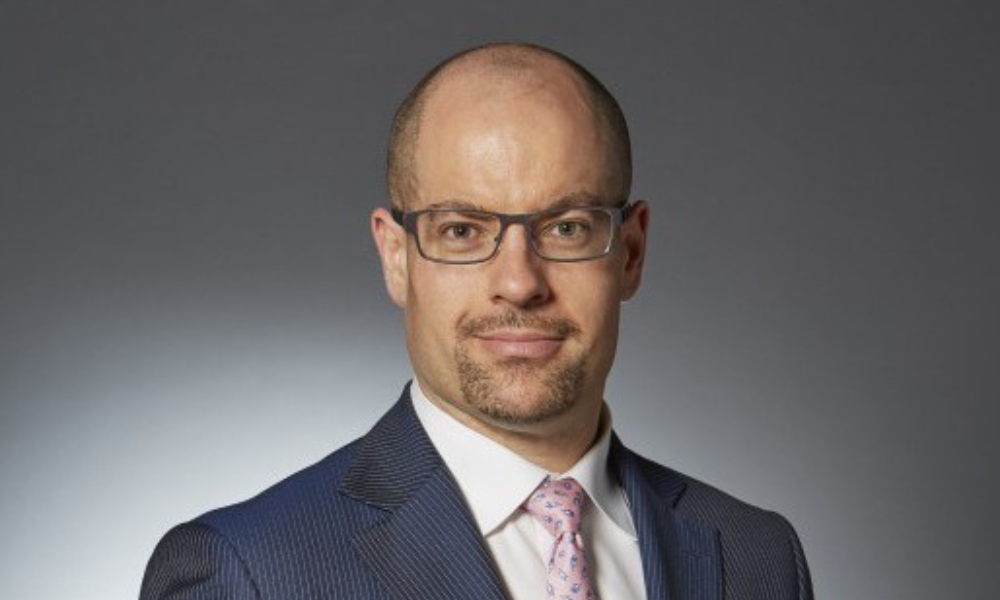Chief Investment Strategist offers outlook on asset class for advisors after a decade of near-zero rates and two years of high volatility

It’s been over a decade since interest rates were normal. That’s the view of Stu Morrow, Chief Investment Strategist at Morgan Stanley Wealth Management Canada. From the great financial crisis through the COVID-19 pandemic, rates were at or near zero and real rates often dipped into negative territory. This was powered by a series of disinflationary growth trends — such as globalization — that made many think developed economies could grow steadily with sustainable inflation rates. Equities drove investment growth, investors sought out alternatives for income and enjoyed steady returns from bull markets, fixed income was neglected.
The pandemic and a shift towards deglobalization, decarbonization, as well as a resulting increase in capital expenditure has brought inflation roaring back into the picture. With inflation came interest rate increases, and a structural shift in rates that are now trending back towards ‘normal.’ Morrow believes that we will likely not return to near-zero rates anytime soon. As a result, interest rates will remain somewhat elevated from their pre-pandemic levels, making fixed income a much more attractive opportunity set for Canadian investors and advisors. Morgan Stanley Wealth Management Canada, Morrow says, has been overweight fixed income since Q1 of 2022.
“We believe, at least now, that we’re towards the end of the rate hiking cycle, and that’s typically a good period to be in bonds,” Morrow says. “Fixed income has historically been a good place to be as a hedge in a portfolio against a slowing environment or a recession. As rates eventually do come down or get cut by central banks — as we think they will in the second half of next year.”
Morrow notes, as well, that from a risk-return perspective, fixed income assets are offering higher coupons today then they had in recent periods. He believes that looking at return vs. volatility, bonds look attractive against stocks.
Holding an overweight position in fixed income since 2022 hasn’t made for smooth sailing through 2023. Morrow notes that we are now looking at nearly three consecutive years of unrealized losses on the US treasury market. Volatility in bonds was unexpectedly high this year, but shifting away from a decade of near-zero rates is likely to cause some increased spikiness. Morrow says that now, forward-leading indicators paint a much more attractive picture for fixed income assets. Even if interest rates do go up, the magnitude of additional rate increases are far less impactful relative to past hikes earlier in the cycle.
What’s more likely, though, is that interest rate hiking from central banks has hit a pause and start cutting rates next year. Morrow believes that in the second half of 2024 we will start to see cuts driving yields lower and bond prices higher. Those cuts are likely to be faster and more aggressive in Canada given the country’s overall interest rate sensitivity. Any cuts will also make cash somewhat less attractive, in his view, driving a rotation into bonds as well.
Morrow outlined where, specifically, in the fixed income market he and his team are looking to for the greatest opportunity. Investment grade bonds, he says, hold more promise than the high yield space. He thinks a short-immediate term duration holds some promise too, hewing closer to the Canadian benchmark at around six years. He thinks global bonds could provide some diversification opportunities for investors but sits at around market neutral on those assets. Between Canada and the US, Morrow looks more favourably at Canada in the short term as he expects rate cuts to come sooner here than South of the border.
While risks associated with further rate hikes persist, Morrow notes they are increasingly subdued. His base-case economic forecast is for slowing growth and a soft landing that avoids technical recession in both Canada and the US, which should result in some cuts in Q3 and Q4 of 2024.
The recent, broad-strokes, history of interest rates has meant that many investors and advisors may have neglected their fixed income exposure and fixed income education. As the case for fixed income grows more attractive, Morrow thinks advisors can avail themselves of the broad base of resources and information available to them through firms like Morgan Stanley, which publishes insights on a range of topics from both their US and Canadian thought leaders. CFA educational programs and thought leaders like Howard Marks can also provide great context and information, in Morrow’s view. Advisors and investors, he notes, should be moving to educate themselves on this space because as interest rates normalize, this asset class may be moving to reclaim its place in portfolios.
“We still believe bonds have a really important role to play in portfolios,” Morrow says. “They produce income at rates they haven’t for the past few years and provide stability through the cycle. We know that volatility has been high in bonds, but we’re out of that period of abnormal interest rates and heading towards normalization at a higher for longer rate. Our tactical recommendation right now is an underweight global equities and overweight global fixed income.”



